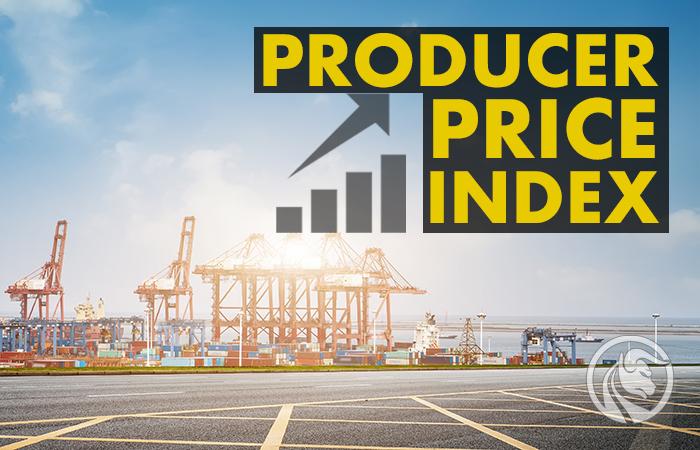Producer Price Index (PPI) - What is Producer Inflation?
In recent months, inflation has been a topic that appears very often in the mainstream media. High inflation is often seen on social media via "Horror receipts", which nowadays not only apply to holidays in Poland, but also to regular purchases at discount stores. However, inflation is much more than that. It is an indicator that very often helps to determine the economic stability of a given country. Low and relatively stable inflation is usually information about an appropriate monetary policy. In turn, high inflation may herald problems with keeping monetary policy in check. High inflation rates can force central banks to raise interest rates, which will lower lending and “cool” the economy. Both high inflation (destroys citizens' savings) and deflation (the risk of a deflationary spiral) are dangerous. The task of the government and the central bank is to work together to coordinate fiscal and monetary policy in order to keep inflation in check and support economic growth. The rules suffer from high and volatile inflation in developing countries that struggle to maintain sound monetary and fiscal policies. But what exactly is inflation?
Contrary to popular opinion, there is no one inflation. Each person or company has its own "Private inflation rate". On the other hand, government agencies (such as Central Statistical Office) try to build aggregate inflation indicators. The most popular are: CPI and PPI. CPI is different Consumer price index, i.e. the index of changes in the prices of consumer goods and services. It is the most common inflation indicator as it is intended to represent the inflation of a statistical household. The PPI index is much less known, which is very important as it shows inflation from the point of view of manufacturing companies. In the following, we will describe in detail what exactly this indicator is and how it is calculated. We invite you to read!
READ: Industrial production - one of the most important macro indicators
History of the PPI
The beginnings of calculating the indicator on the supply side date back to 1902, when it was created WPI (Wholesale Price Index). In 1978, the index name was changed to Producer Price Index (PPI). Like the PPI, the WPI was calculated monthly to track changes in producer and wholesale prices. The change of the name to PPI was partly due to the fact that the producer prices had the greatest impact on the index, therefore the name of the WPI was misleading. In the same year, the methodology of calculating the indicator was also changed. To avoid double counting, the indicator has been divided into final, intermediate and primary goods (SOP system). Another important change came in 2014, when the FD-ID system was introduced, which extended the PPI to include calculating prices for services, construction, government purchases and exports.
It is worth mentioning that The Producer Price Index (and its predecessor WPI) is one of the oldest statistical indicators published by the US Federal Government. The first index (WPI) started in 1902 and had historical data from 1890. Of course, information on price changes has a different date range depending on the sectors. Most industries and sectors related to manufacturing and mining can boast a history of changes in PPI prices since the early 80s.
Producer Price Index - Definition
PPI stands for Producer Price Index. This means that it is an indicator of price changes in the producer sector. The PPI measures the average change in domestic producers' prices. The index aggregates data from thousands of industry and product price indices. The American PPI is published monthly by the BLS (Bureau from Labor Statistics).
As already mentioned, PPI looks at the level of price change from the producer's point of view, and CPI inflation from the point of view of consumers of goods and services. The PPI measures the different stages of the production of goods. The index measures:
- initial stages (crude),
- middle (intermediate),
- finished goods.
The initial goods are measured by the PPI Commodity Index. It measures the price changes of base products such as iron, soybean, wheat or aluminum material. This is the most core producer inflation. It means how much have changed the prices of raw materials that are needed at a later stage of production. Another type of PPI is associated with the "middle" stage of production. This group of products includes, among others refined sugar, paper, leather or basic chemicals. These are semi-finished products that are used at a later stage of production. The key indicator is the Core PPI, which measures the prices of final goods. As a rule, this type of PPI is carefully analyzed by economists. The products included in this PPI category include: household chemicals (e.g. floor washing liquid), car tires and furniture.
When calculating PPI (core), price volatility of components such as energy or food prices are excluded from the calculation. For this reason, prices are heavily dependent on temporary imbalances in supply and demand, which greatly limits the accuracy of this indicator. At the same time, it is difficult to compare price changes in the long run using PPI (core). Obviously, the BLS tracks changes in the price of most "missed components", which allows analysts to recalculate the PPI with changes in food and energy prices.
It is worth noting that the PPI is calculated using a weighted average. This means that the individual components of the index have weights based on their share in domestic production. For example, in the United States, the share of plastic bottles is more important than candles, for example.
How the index is calculated
The BLS calculates approximately 10 PPIs for individual products or product groups. The agency calculates PPIs every month. By covering a really wide product category, PPI covers most industries operating in the United States. From the extraction of metals through fishing, forest management to typical production activities. It is worth mentioning that the PPI covers 72% of the services sector calculated on the basis of revenues (data based on Economic Census).
To increase the accuracy of PPI measurements, each product has a specific weight in the index calculated on the basis of the significance of a given product in the production segment of a given country. In the first stage of PPI calculation, each product that is included in a precisely defined group of products or services. In the second step, the indices are grouped into aggregated indexes (e.g. based on the production stage). The weights for individual products and indexes are calculated based on the Bureau of Census data. The scales are updated every 5 years.
When a company is selected to participate in a PPI survey and is visited by an economist who encourages voluntary participation in the index creation. Of course, the company is informed that the data is stored securely and anonymized. The economist carries out an activity called disaggregation to select specific products to count towards each index. After 7-8 years, the sample of companies representing prices for a given industry or group of products changes. Enterprises are required to complete questionnaires each month (via the Internet). The questionnaires are to be completed on Tuesday, the week of the 13th day of the month. Every month, 100 prices of various product categories are aggregated. If the data is incomplete, the BLS employee contacts the company to supplement the gaps in the survey.
PPI and CPI inflation
The level of the PPI is so important to many analysts that Producer inflation usually appears much earlier than consumer inflation (CPI). This is because the increase in production costs is likely to have a delay in the price levels in stores that have been "affected" by consumers. For this reason, PPI is sometimes used as a “predictor” of CPI inflation.
The PPI is therefore a very important indicator that is considered to be a leading indicator of future consumer inflation (CPI). This is due to the fact that the increase in production costs forces entrepreneurs to increase prices (we ignore the impact of imports and assume that the current producer margins will be maintained). It is also worth looking at the relationship between the CPI and PPI. Some analysts are looking at the spread between the CPI and the PPI.
For example: if CPI and PPI grow at a similar pace, the increase in producer costs is passed on to the end customer. However, in a situation where the CPI grows faster than the PPI for a longer time, consumer inflation must be influenced by an additional factor unrelated to producer inflation. It is worth noting, however, that the calculation of the CPI also includes imported goods (bought by consumers). In turn, the PPI only calculates price changes in domestic production.
The differences between PPI and CPI include:
- CPI includes the impact of imported consumer goods in the price level change, PPI does not include the price of imported goods;
- The CPI index calculates only those products that are directly paid by the consumer, while the PPI includes services that the consumer uses but does not pay for them (e.g. medical services paid by the insurer or the government);
- Exports are included in the PPI, while not in the CPI (which is logical since the American consumer does not use goods and services exported by the United States);
- PPI includes government spending, CPI ignores it in its calculations;
- Unlike the CPI, the PPI includes capital expenditure;
- The PPI is helpful in determining the real change in the level of production, the CPI focuses on the change in the cost of living.






















![Forex Club – Tax 9 – Settle tax on a foreign broker [Download the Application] Forex Club - Tax 9](https://forexclub.pl/wp-content/uploads/2024/02/Forex-Club-Podatek-9-184x120.jpg?v=1709046278)
![Trading View platform – solutions tailored to the needs of traders [Review] trading view review](https://forexclub.pl/wp-content/uploads/2024/03/trading-view-recenzja-184x120.jpg?v=1709558918)
![How to connect your FP Markets account to the Trading View platform [Guide] fp markets trading view](https://forexclub.pl/wp-content/uploads/2024/02/fp-markets-trading-view-184x120.jpg?v=1708677291)
![How to invest in ChatGPT and AI? Stocks and ETFs [Guide] how to invest in chatgpt and artificial intelligence](https://forexclub.pl/wp-content/uploads/2023/02/jak-inwestowac-w-chatgpt-i-sztuczna-inteligencje-184x120.jpg?v=1676364263)


![WeWork – the anatomy of the collapse of a company valued at $47 billion [WeWork, part II] wework bankruptcy story](https://forexclub.pl/wp-content/uploads/2024/04/wework-bankructwo-historia-184x120.jpg?v=1711729561)
![Adam Neumann – the man who screwed up Softbank [WeWork, part AND] adam neumann wework](https://forexclub.pl/wp-content/uploads/2024/04/adam-neumann-wework-184x120.jpg?v=1711728724)





![How to transfer shares to another brokerage office [Procedure description] how to transfer shares to another brokerage house](https://forexclub.pl/wp-content/uploads/2024/03/jak-przeniesc-akcje-do-innego-biura-maklerskiego-184x120.jpg?v=1709556924)

![The most common mistakes of a beginner trader - Mr Yogi [VIDEO] Scalping - The most common mistakes of a beginner trader - VIDEO](https://forexclub.pl/wp-content/uploads/2024/03/Scalping-Najczestsze-bledy-poczatkujacego-tradera-VIDEO-184x120.jpg?v=1711601376)
![Learning patience: No position is also a position - Mr Yogi [VIDEO] Scalping - Learning patience - No position is also a position - VIDEO](https://forexclub.pl/wp-content/uploads/2024/03/Scalping-Nauka-cierpliwosci-Brak-pozycji-to-tez-pozycja-VIDEO-184x120.jpg?v=1710999249)
![When to exit a position and how to minimize losses - Mr Yogi [VIDEO] Scalping - When to exit a position and how to minimize losses - VIDEO](https://forexclub.pl/wp-content/uploads/2024/03/Scalping-Kiedy-wyjsc-z-pozycji-i-jak-minimalizowac-straty-VIDEO-184x120.jpg?v=1710336731)

















